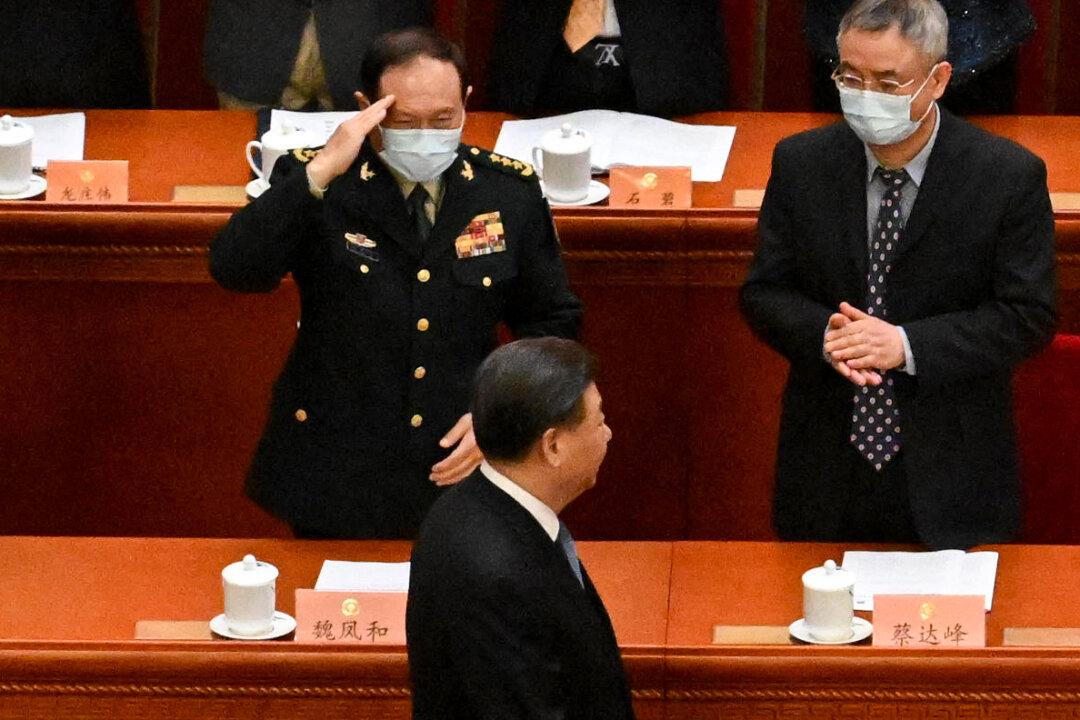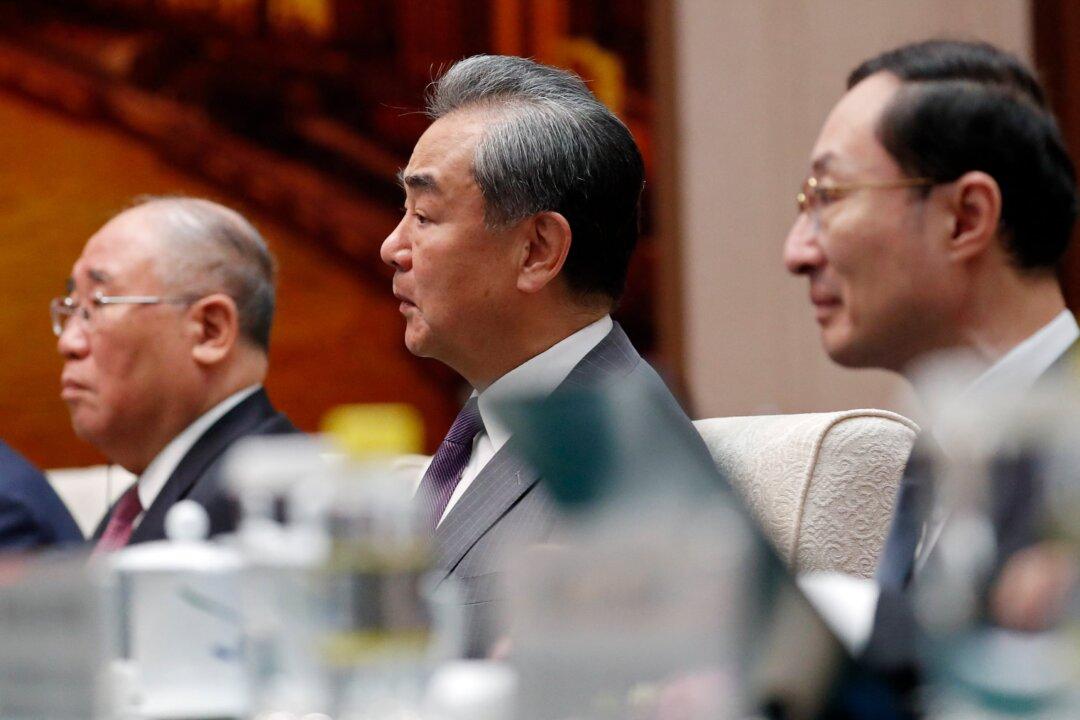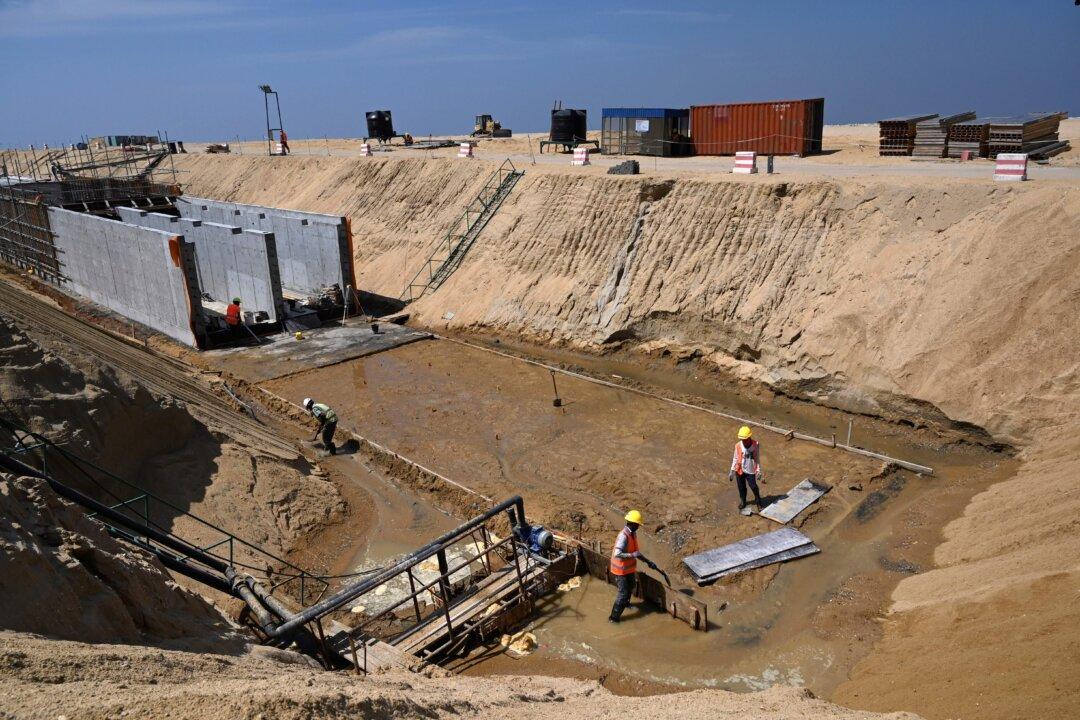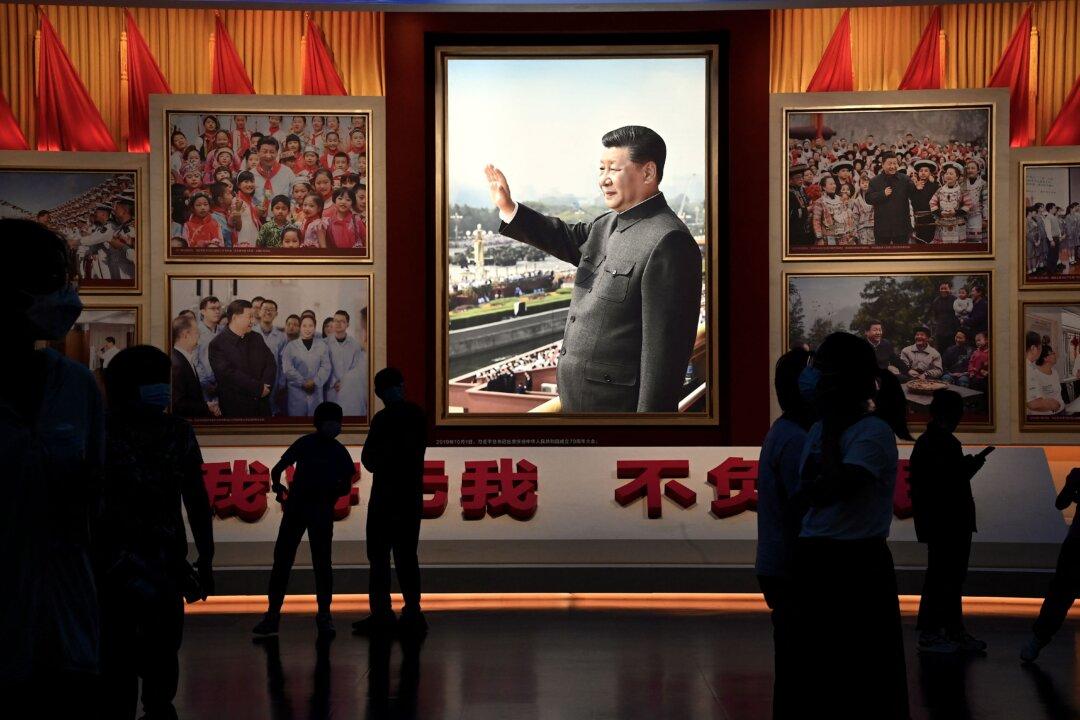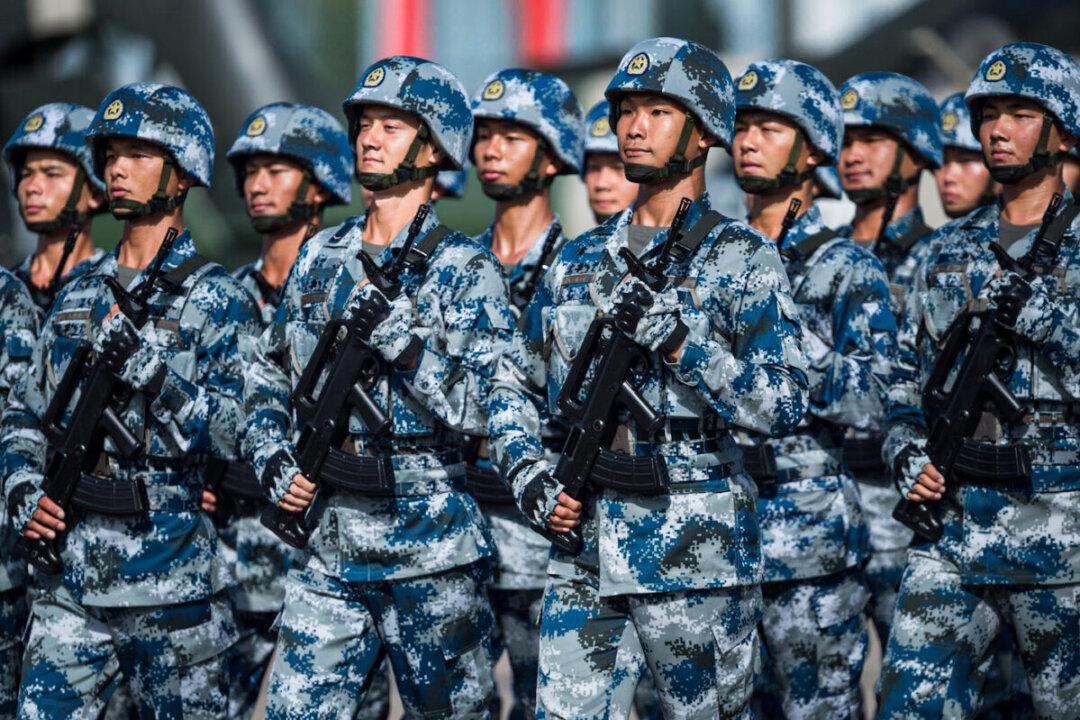
People's Liberation Army soldiers at the Shek Kong barracks— part of the Hong Kong garrison —on June 30, 2017. Dale De La Rey/AFP via Getty Images
Beijing appointed Rear Admiral Lai Ruxin as the political commissar of the Hong Kong garrison of the People’s Liberation Army (PLA) on March 28.
Lai is the garrison’s ninth Chinese Communist Party political commissar and the first commissar with a Navy background.


